There would be no argument about the discovery of America; many Americans and most archaeologists agree that Christopher Columbus was the hero. For generations, that was what the history books said, but old evidence showed that they were wrong. There are a few theories that confirm the discovery of America. That said, every theory contradicts controversy and myth.
There are many different opinions about who discovered America, which are still being investigated today by archaeologists, nautical archaeologists and oceanographers who studied the ocean, currents and evidence found to indicate who may have discovered America. Columbus should have the credit for the discovery of the "economic exploitation of the economic markets of Europe", and historians credit him with the discovery of America.
There are many possibilities as to who discovered America. China in 1421 AD, Wales in 1150 AD. and Polynesia in 1000 AD, Scandinavia in 1000 AD, but before Polynesia, the Irish in 530 AD, Israel believed in 600 BC. to have discovered America. They all have ships, navigators and the ability to sail the long voyages to America. Everyone has left proof that they all came to America, with the exception of the Irish.
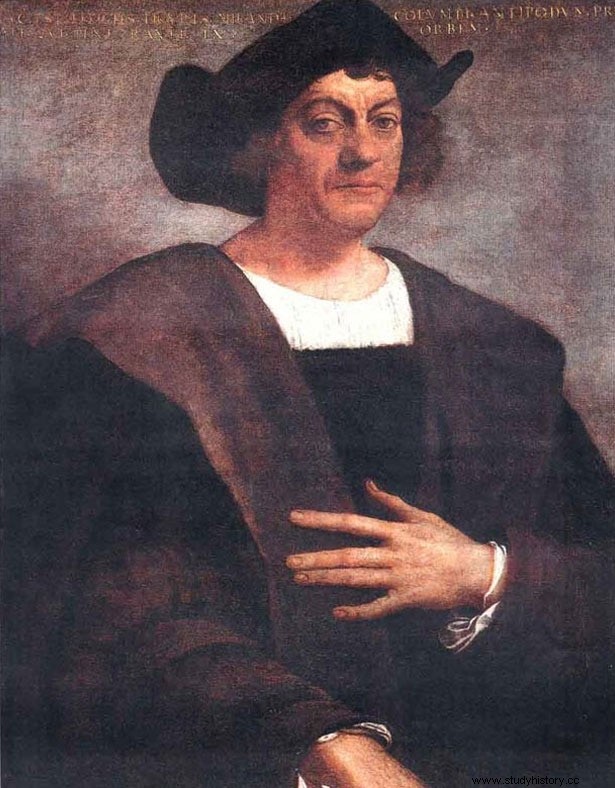
Did the Chinese Discover America?
This theory has been proposed by a small group of scientists and amateur historians, led by Gavin Menzies, a retired submarine commander. Menzies claimed that Zheng He, a Muslim-Chinese eunuch mariner from the Ming Dynasty, discovered America 71 years before Columbus.
At that time, China, the Ming Dynasty, was an emerging superpower with a strong armada. By the beginning of the Ming Dynasty, China had reached the pinnacle of marine technology that was unmatched by the world. With advances in navigation, marine architecture and propulsion, China was the leading maritime power in the region for centuries. The Chinese had taken their magnetic compasses aboard ships to use for navigation since the XNUMX century (two centuries before Europe). Zheng He was a Chinese sailor, explorer, diplomat, naval admiral and courtier during China's early Ming Dynasty who helped expand China's maritime and commercial influence in all regions bordering the Indian Ocean. Zheng He's first voyage was commanded by the emperor, who asked Zheng to become commander of what he called "the western seas". Although Zheng had traveled through the South China Sea, the Indian Ocean, the Arabian Sea, the Red Sea, and along the east coast of Africa, most historians would agree that the sole purpose was to flatter the emperor's vanity.
What is the evidence that shows Chinese discovery?
Nevertheless, these missions may shed light on the discovery of America. Gavin Menzies examined the evidence behind his speculations, and gathered historical accounts and archaeological information. He claimed that his theory was based on a newly discovered map dating back to 1418, which shows America and even includes the names of specific Peruvian cities. The map was found in a second-hand bookstore by lawyer Liu Gang in Beijing.
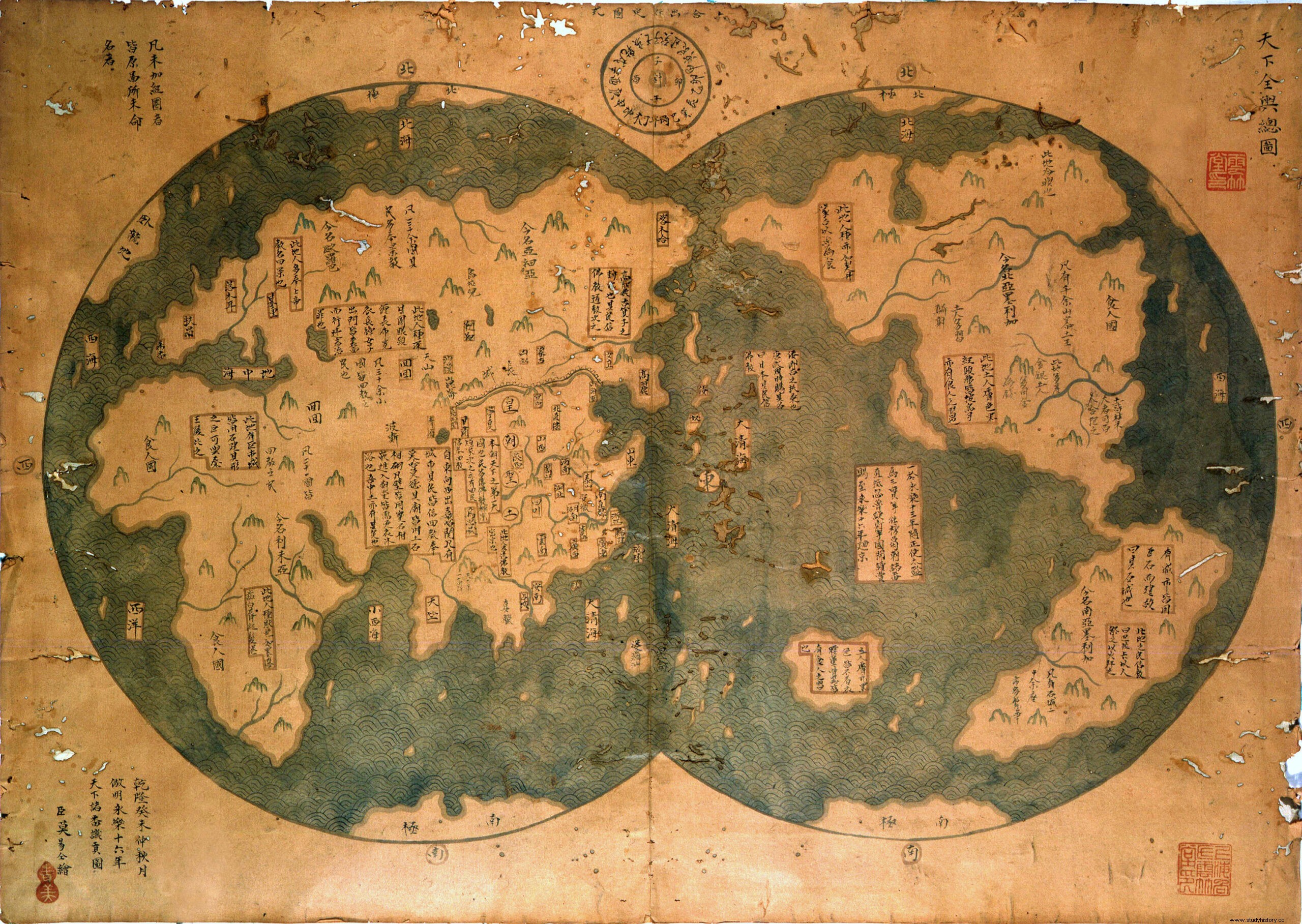
"The document," Menzies said, "is a copy of the 18th century Admiral Zheng He's 1417 map." Menzies claimed that the map clearly showed North American rivers, the continent of South America and the coastline. Although Zheng's journey to the new world was not new, the map is. The discovery of the map was unforeseen as the Chinese court burned all records of Zheng's travels and achievements, creating a mystery that teased historians such as Menzies 500 years later.
Mr. Liu, the lawyer who discovered the map, brought the map forward for further authentication by an appraiser from Christie's Auctions:it said the map was not fake or "newly made". In addition, Menzies also got his team to analyze all the details on the map, which also turned out to be authentic. He concluded that only China had the resources to make such maps, build seaworthy ships and explore this scope.
Could Zheng He, one of the greatest sailors, explore the road to America's shore decades before Columbus? Some people certainly do not think so. First, people asked Menzies' scholarship, which was just an "amateur" compared to other historians. Second, many of his claims were "written without evidence," says historian Robert. Finally, someone discredited the authenticity of the map:Simon Jenkins, a British author and editor, wrote in one of his articles “... Why reduce them by failing to bypass? Also, since the map is a copy, there is no way to verify any original. ”
The theory does not end here. In 1974, Bob Meistrell and Wayne Baldwin found thirty unusual shaped rocks scattered across the seabed off the coast of Palo Verdes in 1974. After investigation, it was found that this was in fact the anchor of a 3,000-year-old Chinese wreck. The story was met with great interest when it suggested that the new world was discovered by the Orient and not by Europeans. In particular, this strengthened Menzie's theory of Zheng He's discovery of America.
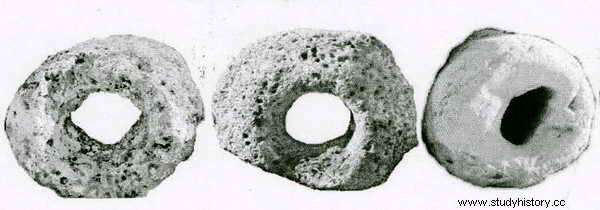
Some people are skeptical of the idea that the Chinese discovered America, but after all, some theories are more credible than others. We know for sure that Vikings visited America centuries before Columbus, and there is also (controversial) evidence that Polynesian explorers visited the continent before Columbus. Nomadic Asian tribes were the first to discover America over 15,000 XNUMX years ago- xxx years before Columbus.
Could it be the Norwegians?
Columbus may have made America famous for the Europeans who eventually conquered it, but he did not discover it. Erik the Red Son, Leif Erikson, was a Norse explorer and Viking from Iceland. To add, Greenland's first Norse settlement was also founded by Erik the Red. Apparently the fairytale blood flowed through their veins, while Leif continued to travel much further:to America.
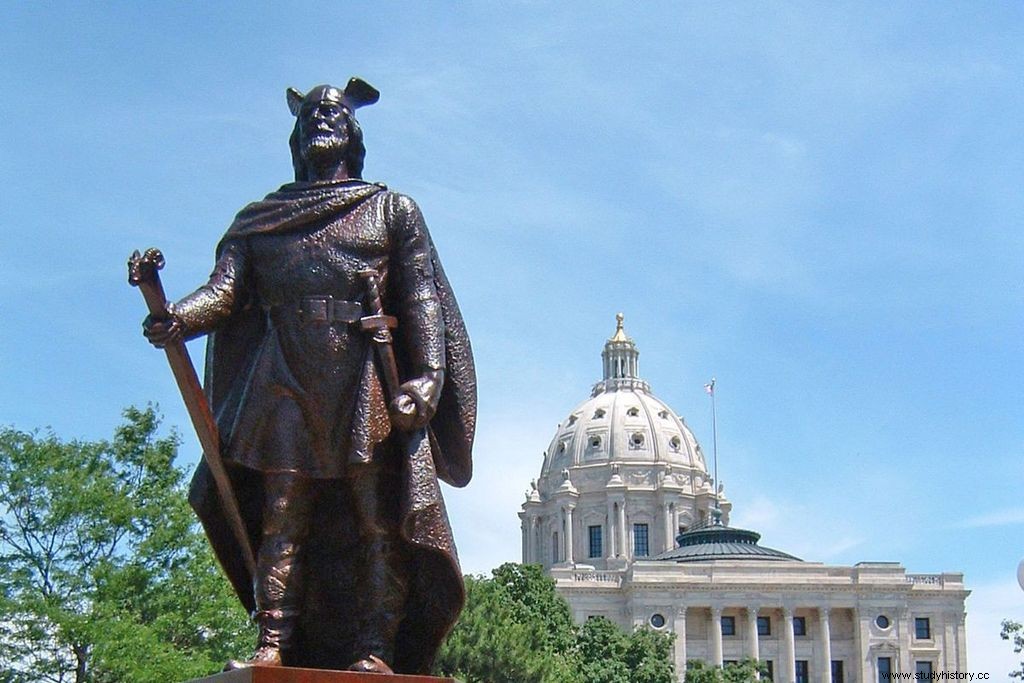
What is the evidence?
Leif and his crew traveled from Greenland to Norway in 999 AD. Not long after that he sailed towards the Atlantic Ocean. According to Sagas about Icelanders, Around 1000, Leif was blown off course on his way back to Greenland and landed on the North American continent, where he discovered forests with excellent buildings and grapes, which made him call the new region Vinland ("Land of Wine"). ") - what is now called Newfoundland in Canada. Surprised, but not surprised perhaps, the first Viking site was found at the northern tip of Newfoundland. Well, at least it was clear from the features that the Vikings had visited North America centuries before Columbus.
The second Viking settlement was found in America. Things became clearer:not only have Vikings visited America, they have also colonized part of it - or at least tried to do so. "The sagas suggest a short period of activity and a very short and unsuccessful colonization attempt," says Douglas Bolender, an archaeologist who specializes in Norse settlements.
Another indirect evidence that suggests that the Vikings (Leif and his crew) may have reached America was the failed colonization of Leif's brother, Thorvald Eiriksson. Icelandic sagas claim that in 1004 Thorvald Eiriksson and his crew of thirty people tried to attack the local population, but Eiriksson was instead killed by an arrow. Furthermore, the sagas mention a peace agreement between the indigenous people and the Norwegians, which suggests that Norwegians may have already come long before Colmbus.
Another interesting piece of evidence that supports this theory was the researchers' recent discovery of dental fillings. Researchers believe that the Vikings took up the practice of filling teeth from another culture as no European culture had ever done:it was only in America that such a practice was used.
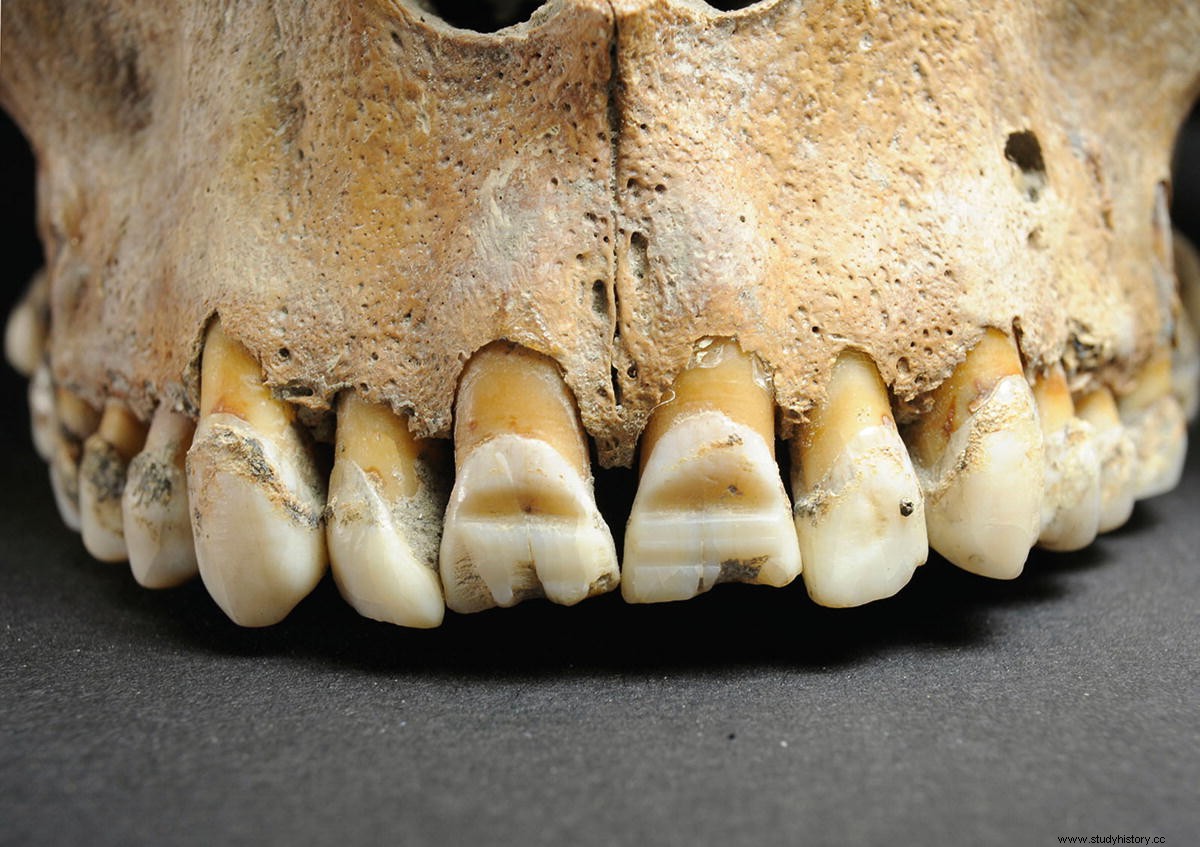
As predicted, there are always skeptics of a theory. Some, such as Prof Clark and Miss Brown, believe that "There is no scientific evidence that Vikings were in America." According to the sagas, the book Voyages to Vinland, Leif was also not the first European to travel to America:Leif had heard about merchant Bjarni Herjólfsson, who claimed to have seen land west of Greenland, which then made him visit.
Hold out ... What about polynesians?
Before you completely changed your mind and decided that the Vikings discovered America, new DNA evidence revealed that it was not Columbus or the Norwegian (Erik Eiriksson) - there were no Europeans at all; it was actually the Polynesians. All modern Polynesians can be traced back to the sea migrating Austronesians, who were the first humans to discover and populate most of the Pacific islands, including countries as far away as Hawaii, New Zealand and Easter Island.
What is the evidence?
Clues to the Polynesian migration pattern are found in sweet potatoes. The origin of sweet potatoes in Polynesia remains a mystery:Sweet potatoes were first domesticated in the Andean-South America about 800 years ago, and it could not have spread to other parts of the world before contact was made. In other words, if Europeans were the first to contact America between 500 and 1,000 years ago, the sweet potato would not have been discovered elsewhere until then.

The DNA study looked at genetic samples taken from modern sweet potatoes from around the world and historical samples that were kept in herbarium collections. Sweet potatoes in Polynesia were discovered to be part of a distinct lineage that was already present in the region when European explorers introduced different lines elsewhere. Sweet potatoes, in other words, got out of America before European contact. Furthermore, when combined with archaeological and linguistic evidence regarding the timeline of Polynesian expansion, an original date of contact between Polynesia and America appears to be between 500 and 700 CE. Polynesians would have arrived in South America before the Norwegian arrived in Newfoundland.
Another finding that is shown to be "true" is that the Polynesians actually came before the "Columbus discovery". Chicken bones were recently uncovered off the coast of Chile. These chicken bones resembled the DNA of a bird species native to Polynesia. In other words, Polynesians made contact with the west coast of South America as much as a century before any Spanish conquerors. "Chickens could not have gotten to South America alone — they had to be taken by humans," said anthropologist Lisa Matisoo-Smith of the University of Auckland, New Zealand.
In addition to DNA studies and archaeological records, there is also linguistic and technical evidence that can also provide clues. Chumash Indian Homeland is located on the Northern Channel Islands and along the California coast between Malibu and Paso Robles. The first evidence is the similarities between the naming of Chumash's canoes and those of the traditional Polynesians. The Chumash word for "sewn plank canoe" is called tomolo'o, while the Hawaiian word for "useful wood" is kumulaa'au. An interesting fact is that the Polynesians colonized Hawaii during the first millennium AD, and in the process the language developed into the Hawaiian language. For example, for the Hawaiian word "kumulaa'au", it is a combination of the Polynesian words "tumu" (wood) and "ra'akau" (wood). Linguistic specialists say that this is just a difference in pronunciation, and that it is the same word. This means that the Polynesians would have traveled all the way to Santa Barbara to share this information.
Furthermore, the Polynesians were claimed to be the best navigators and sailors. They also had ships that were efficient and clearly served them well when they had traveled around the Pacific Ocean. To get all the way to America, it is crucial to have a good ship and navigators to take the trip. It was said that it would take about 300 days or 4,000 miles to travel to America. Without these assets, it would be almost impossible to get to this destination.
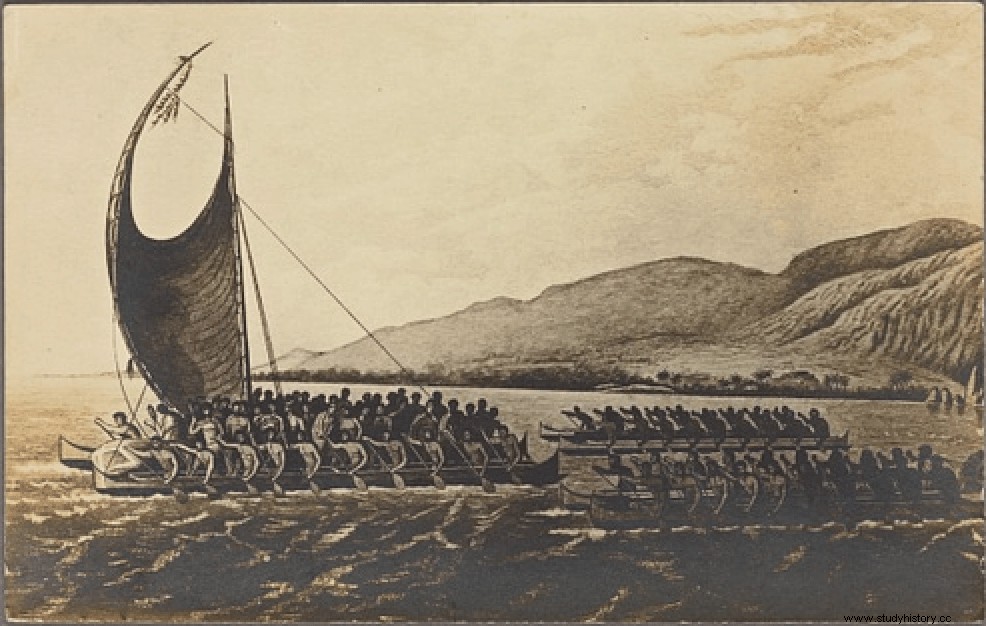
So who actually discovered America?
In conclusion, there are many theories of evidence that support the discovery of America. Personally, the Polynesians were the first to discover America, because all the evidence is very logical and built on stable facts, which in my opinion makes it the only viable option. However, there is ample evidence that Columbus was not actually the first person to discover America. Christopher Columbus may have been the first European to come across America, but he was not the first person to discover it. Prehistoric Polynesians beat the Europeans in America. What do you think?
